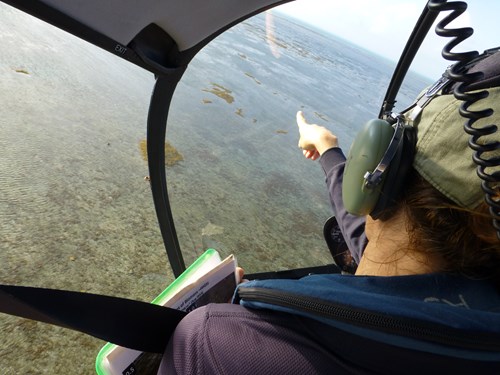Checking for change in seagrass health
 Torres Strait is home to one of the world’s largest seagrass meadows. These highly productive habitats support commercial and traditional fisheries, significant dugong and turtle populations, and play an important role in recycling nutrients, stabilising sediment, improving water quality and storing carbon.
Torres Strait is home to one of the world’s largest seagrass meadows. These highly productive habitats support commercial and traditional fisheries, significant dugong and turtle populations, and play an important role in recycling nutrients, stabilising sediment, improving water quality and storing carbon.
Seagrasses are an integral part of the natural and cultural landscape on which Ailan Kastom is founded and underpin the health and wellbeing of First Nations peoples in Torres Strait. Records of local Traditional Ecological Knowledge combined with expanded scientific research and monitoring programs are constantly improving and provide a shared understanding of seagrass health in the region.
Although extensive seagrass meadows remain, significant dieback has been observed in some western areas around Mabuyag Island and Orman Reef in 2019 and 2020. Surveys by James Cook University (JCU) and LSMU in the protected Dugong Sanctuary show substantial seagrass declines between 2018 and 2020.
These results suggest a declining trend and highlight the need to build on long running monitoring with more active management interventions to respond, restore and rebuild seagrass health. In 2020, the LSMU designed an ongoing screening program for possible disease with the Department of Agriculture, Water and the Environment (DAWE) Biosecurity lab in Cairns. Other potential causes of decline under investigation include changes in wind patterns affecting seagrass exposure and sediment movement, and increased dugong and turtle grazing pressure.